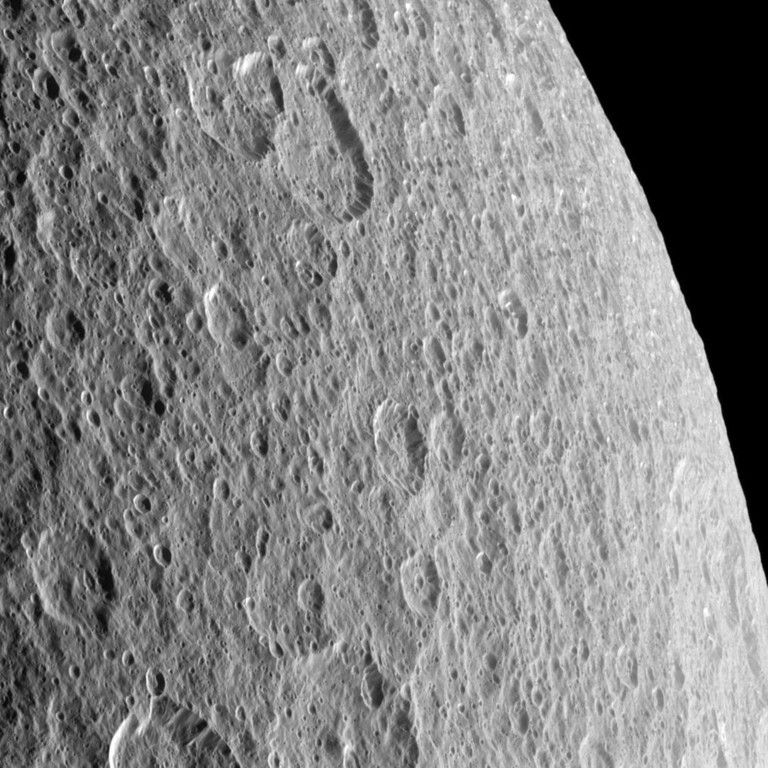Return to Rhea
Return to Rhea
On March 2, 2010, Cassini swooped down to within about 100 kilometers of Rhea to "sniff" the moon. Particle and fields instruments will use the data collected to try to determine what is coming off Rhea. The last targeted flyby of Rhea happened in November 2005.
Approaching Rhea, RADAR performed a raster scan of the moon's surface to obtain simultaneous scatterometry and radiometry measurements to understand the texture and composition of the surface.
The Cassini Plasma Spectrometer (CAPS) took over prime pointing 45 minutes before closest approach to observe the interaction before Rhea and Saturn's magnetosphere. After closest approach, the Visible and Infrared Mapping Spectrometer (VIMS) and the Composite Infrared Spectrometer (CIRS) imaged Rhea at visible and infrared wavelengths to better understand its geologic history and composition. CIRS continued to observe while Rhea went into eclipse
Rhea Flyby at a Glance
Date
March 2, 2010
Altitude
62.7 miles (100.9 km)
Speed
19,000 mph (8.6 km/sec)
































